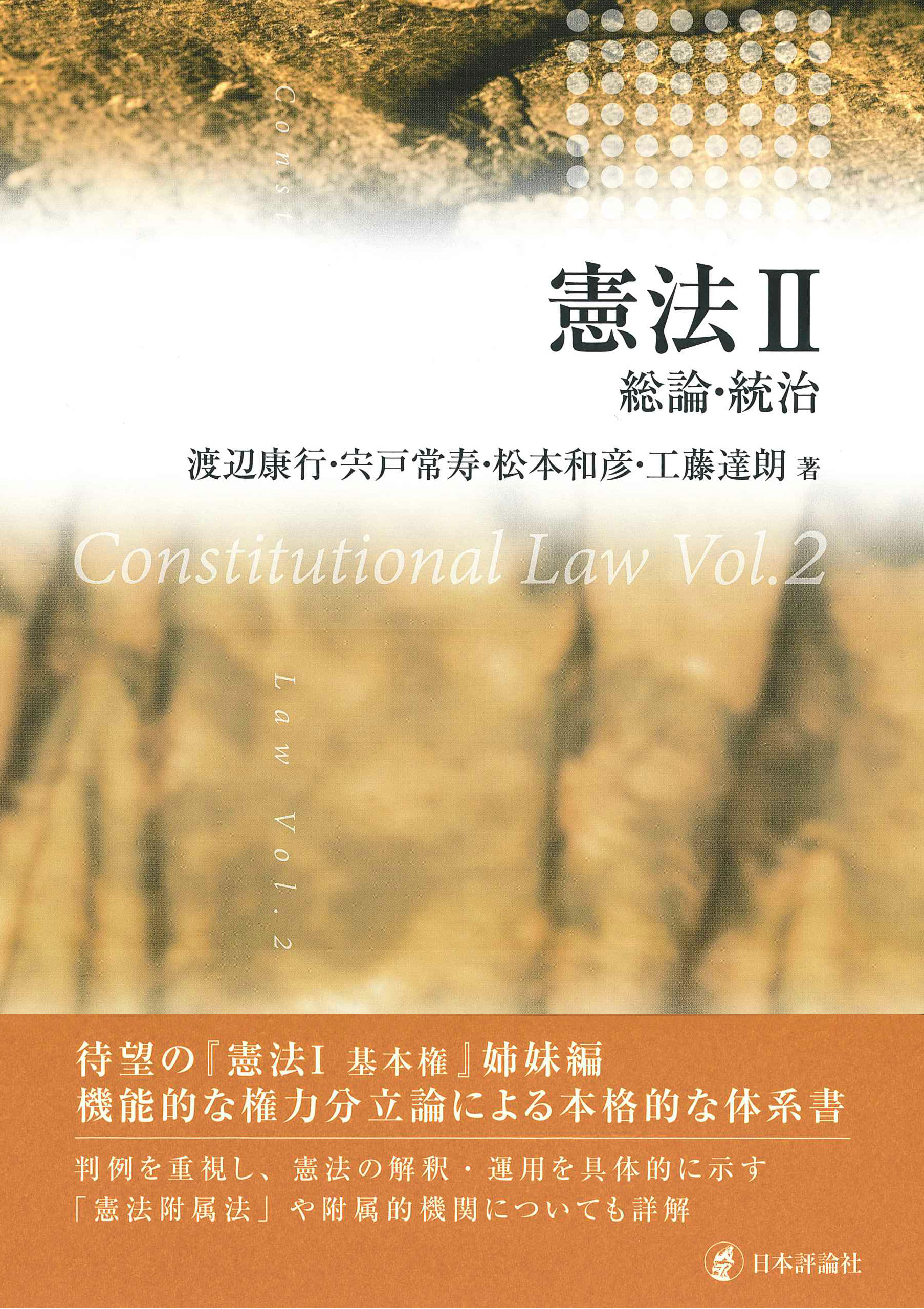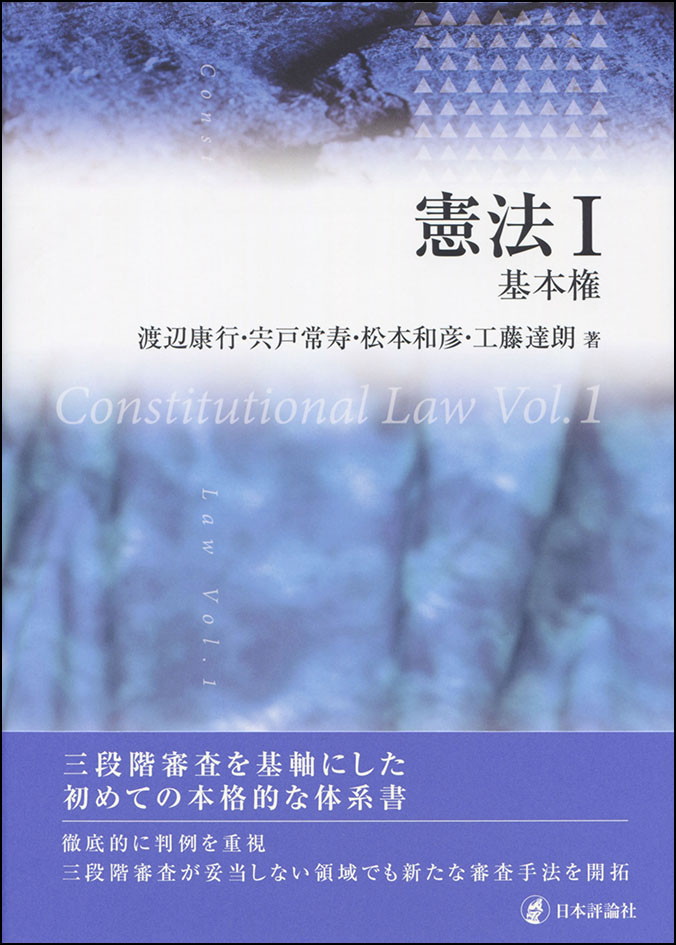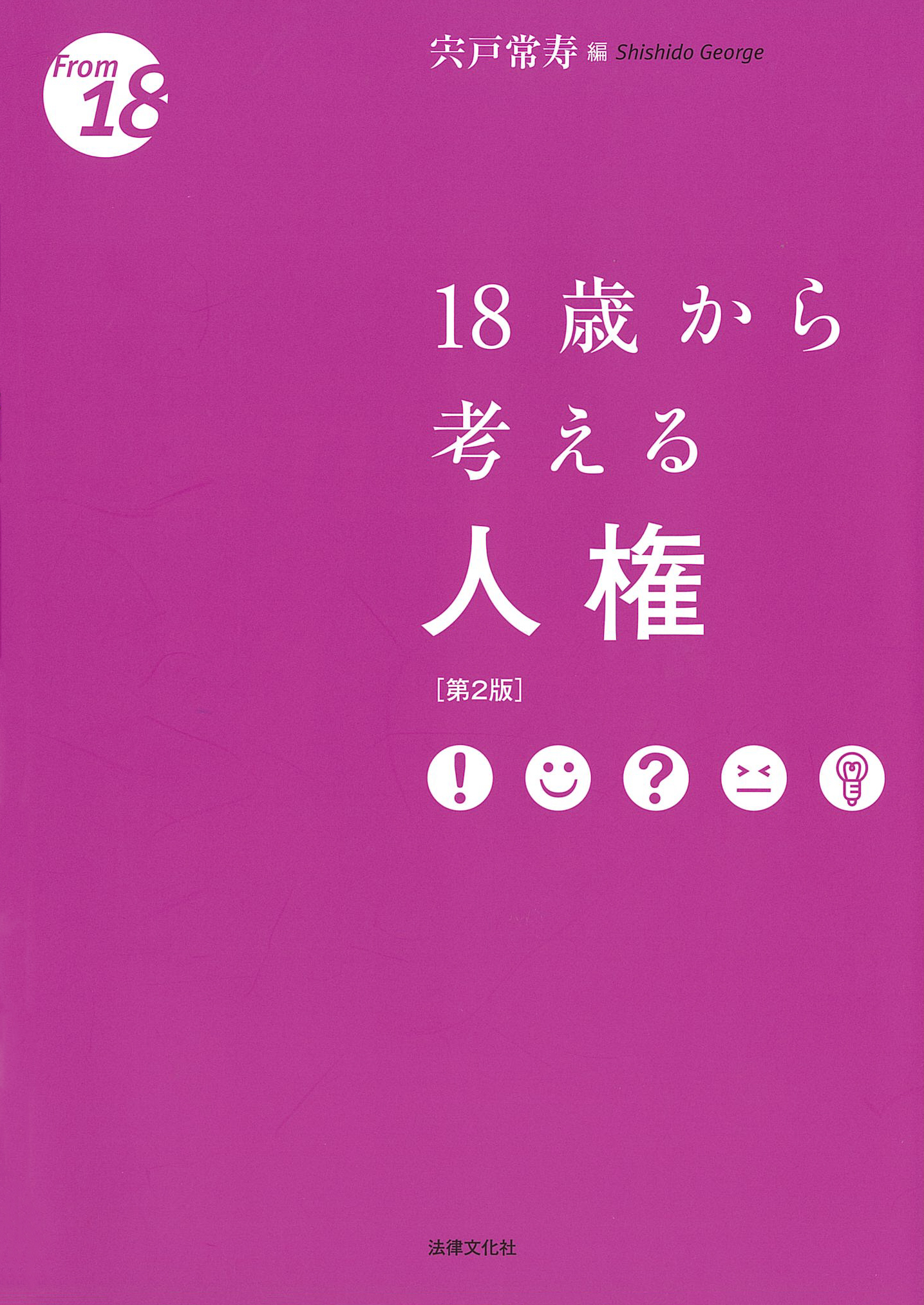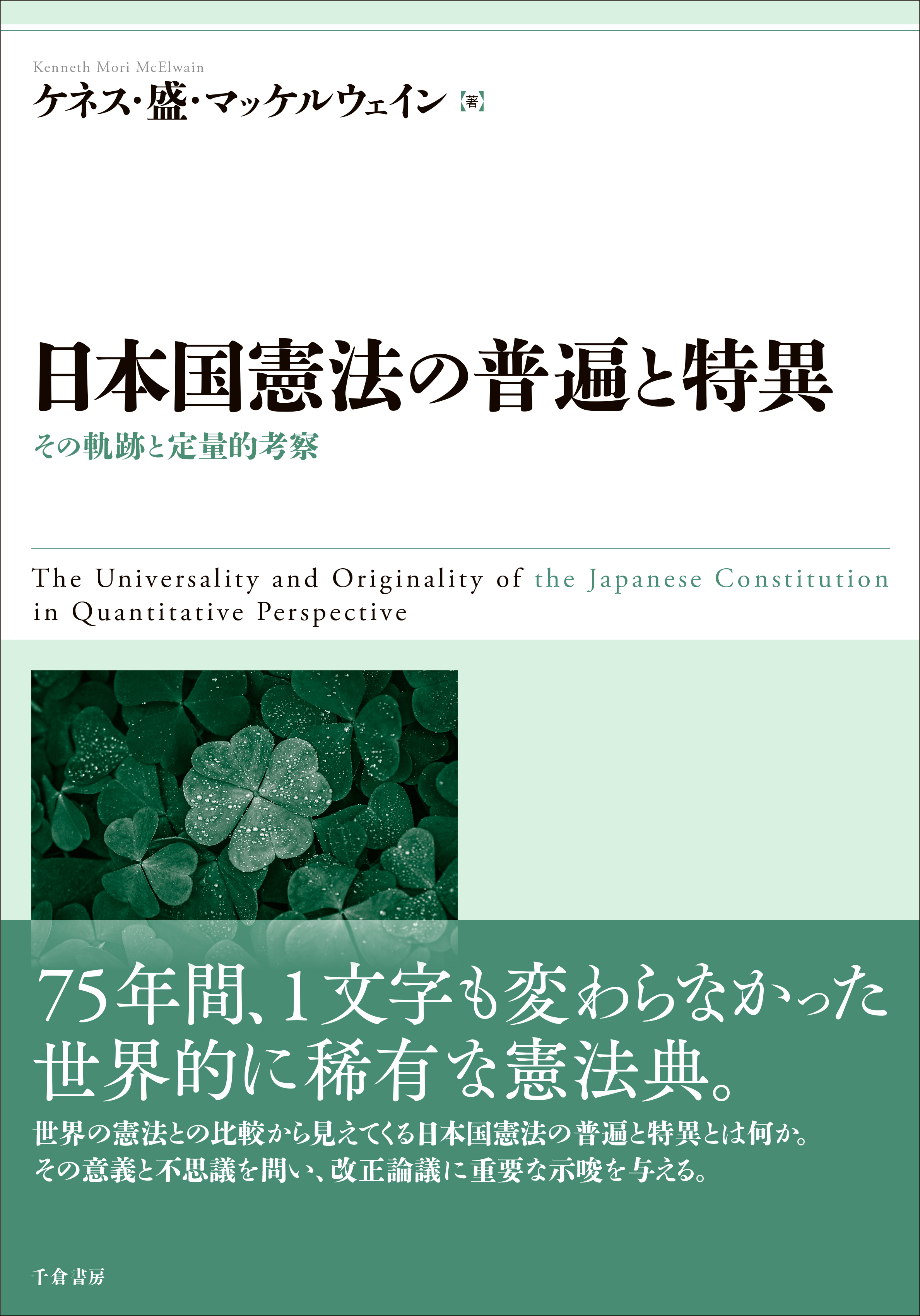
Title
Kenpo II (Constitutional Law, Volume 2 - General Theory and the Form of Government)
Size
488 pages, A5 format
Language
Japanese
Released
September, 2020
ISBN
978-4-535-52479-8
Published by
Nippon Hyoron sha co., Ltd.
Book Info
See Book Availability at Library
Japanese Page
The academic discipline of constitutional law comprises three parts: the general theory of constitutional law, basic human rights, and the form of government. Written by four coauthors (including me), this textbook covers the domains of general theory and the form of government. Combined with Constitutional Law, Volume 1, published four years earlier, it covers the entirety of constitutional law.
Since I became a researcher in the mid-1990s, many new judicial precedents have become objects of study in human rights research. This has necessitated major revisions in textbooks on human rights theory. Moreover, legal education has expanded with the launch of a Japanese law school system, and professors are required to provide for their students intricate analyses of human rights–related judicial precedents. This has fostered many innovations in human rights–related educational materials, and the first book, Constitutional Law, Volume 1, aimed to serve as the definitive edition for this domain.
Meanwhile, the mid-1990s also saw numerous reforms in the domain of governance, including political, administrative, decentralization, and judicial system reforms. These systemic reforms did not involve amendment of the Constitution of Japan, as the Constitution stipulates only the larger framework for the government structure and its embodiment is entrusted to legislation. Thus, instead of amendment, these reforms have been realized through legislation. Certain laws (acts of the Japanese legislature) provide the details for the systems involving such reforms, including the Diet Act, the Cabinet Act, the Court Act, and the Local Autonomy Act. These are inclusively known as the “Constitution-associated laws,” since they differ from ordinary laws in terms of their intimate relationship with the Japanese Constitution of Japan.
Thus, from another perspective, a course in constitutional law covers more than the text of the Constitution itself and an analysis of the intents and significance of constitutional stipulations. Just like human rights cannot be taught without reference to relevant precedents, studying the “living Constitution” requires investigation of the Constitution-associated laws and their implementations. Although some textbooks do emphasize the importance of these laws, it is not enough to add detailed explanations of the amended laws and their implementation in what has been called “constitutional reform without constitutional amendment.” One of the key points of emphasis in this book is the recognition of the insufficiency of this approach.
I have personally written the following chapters: “History of the Japanese Constitution,” “Separation of Powers and the Rule of Law,” “Pacifism,” and “Local Autonomy.” Regarding the separation of powers, the general view in Japan is the liberal understanding that division of powers and checks and balances protect the rights and freedoms of people. In contrast, this book takes the position that the division of powers is an organizational principle for realizing an appropriate government structure (governance), and that this principle is intimately related with democracy. This viewpoint is prevalent in Germany as the theory of functional division of powers. The book uses this perspective to investigate issues related to the Constitution of Japan and Constitution-associated laws. Thus, my discussion of the separation of powers from a general theory perspective has been carefully written, so that its explanations are in line with the chapters written by my fellow authors.
I also examined debates surrounding Article 9, which expresses the Japanese people’s strong desire for peace and outlaws war as a means of settling international disputes. Article 9 is the most discussed provision in the Constitution, involving both politics and public opinion. Nevertheless, older professors seem to worry that young constitutional scholars, including me, are currently avoiding in-depth discussion of the article. This book provides a comprehensive, objective discussion of the article, its relationship to current pacifism, and multiple related issues. With the benefit of my 20 years’ experience of teaching constitutional law at the university level, I can say that we have finally published a textbook that fully explores these issues and can be used to stimulate fruitful debate and discussion within the classroom and in general society.
(Written by SHISHIDO George, Professor, Graduate Schools for Law and Politics / 2021)
Related Info
WATANABE Yasuyuki, SHISHIDO George, MATSUMOTO Kazuhiko, KUDO Tatsuro “Kenpo I” (The Constitution I: Basic Rights)
https://www.u-tokyo.ac.jp/biblioplaza/en/C_00022.html



 Find a book
Find a book


 eBook
eBook

